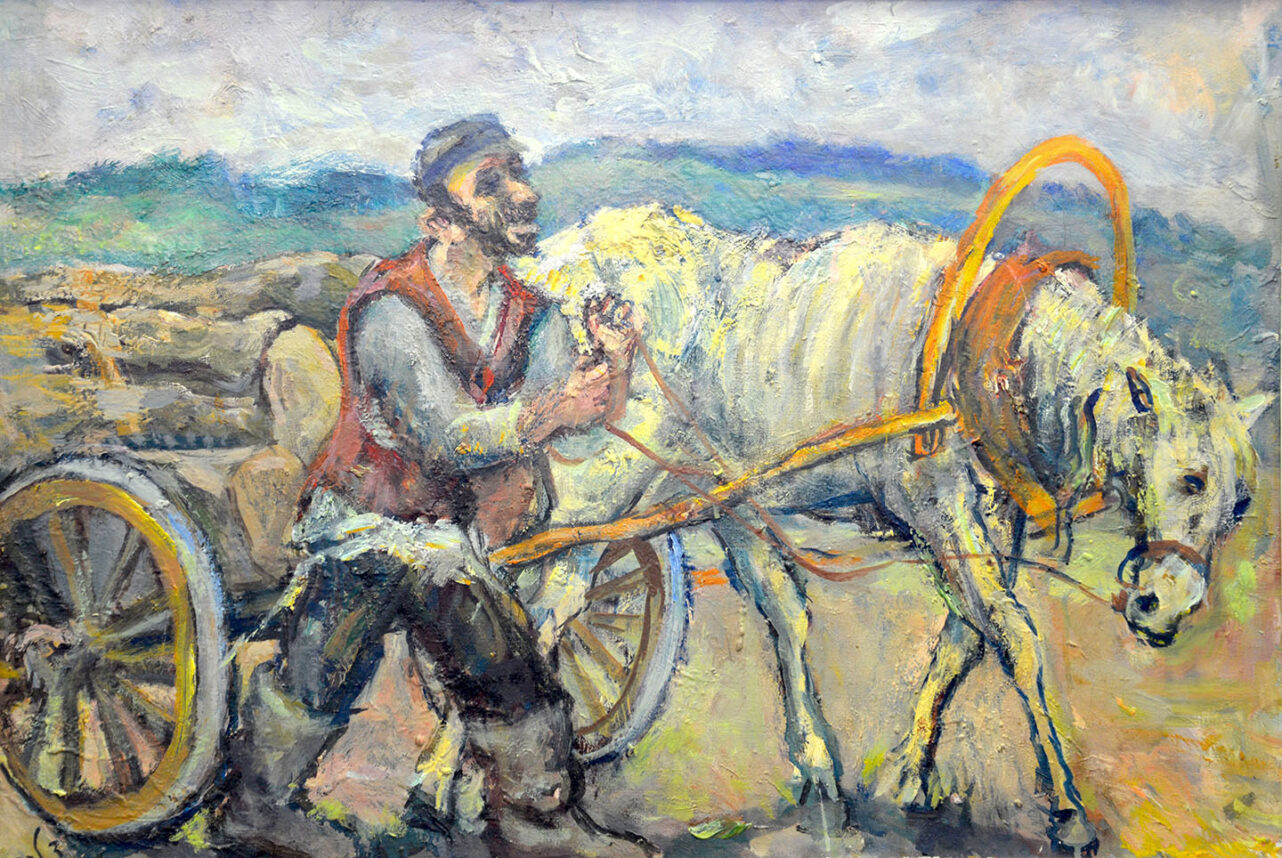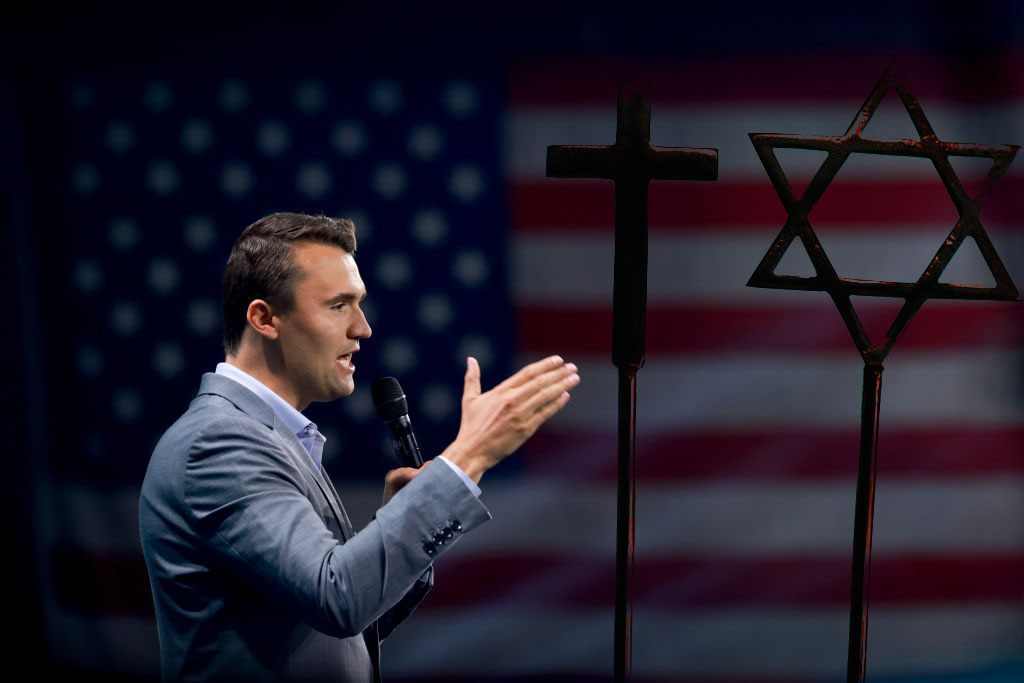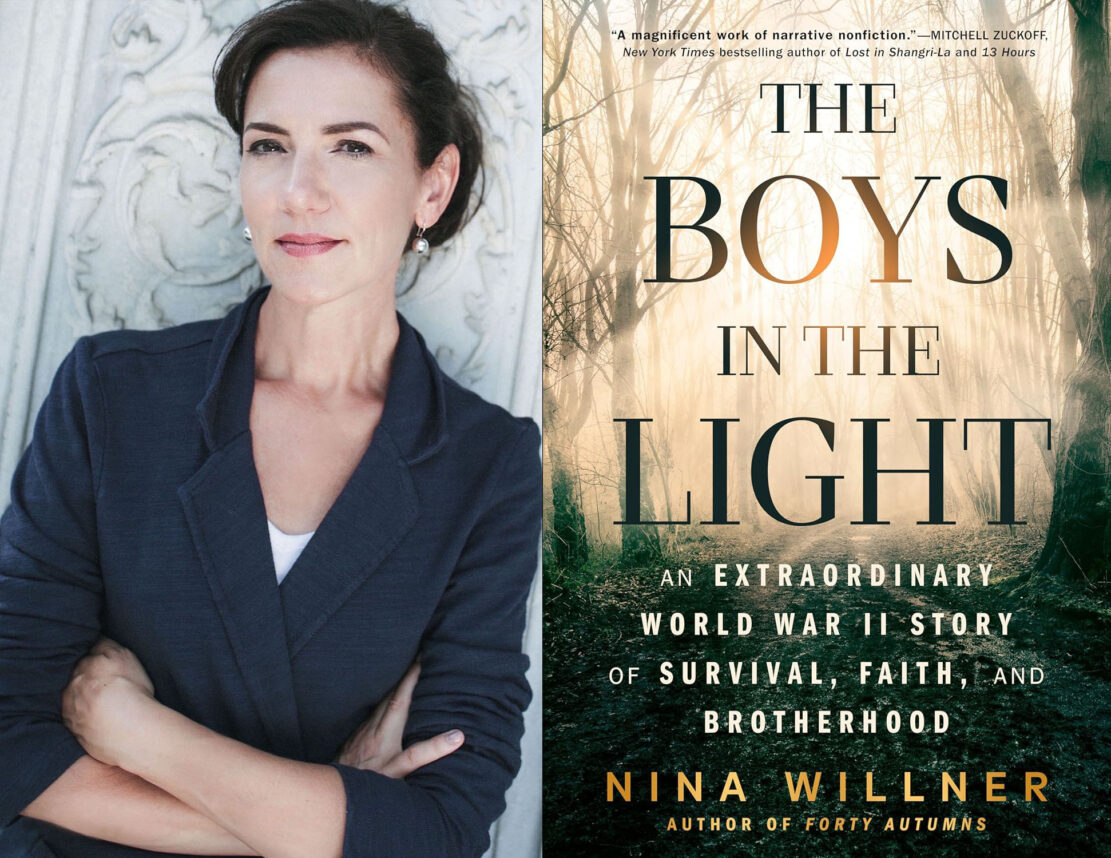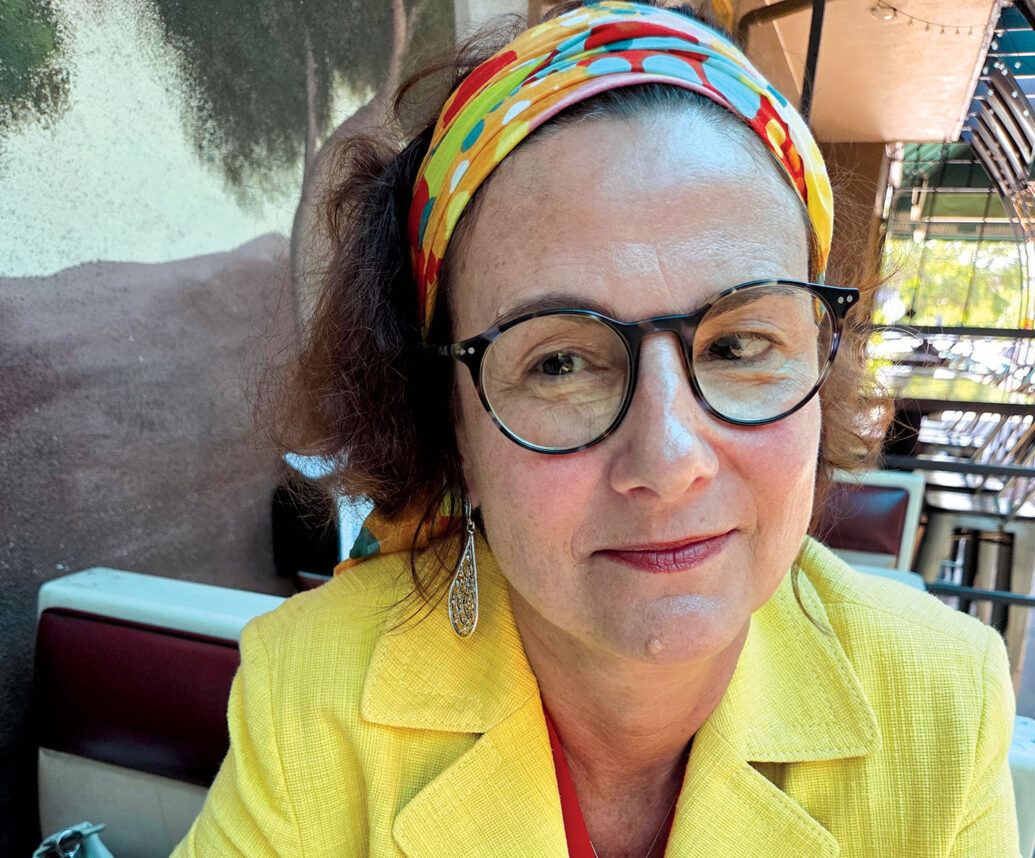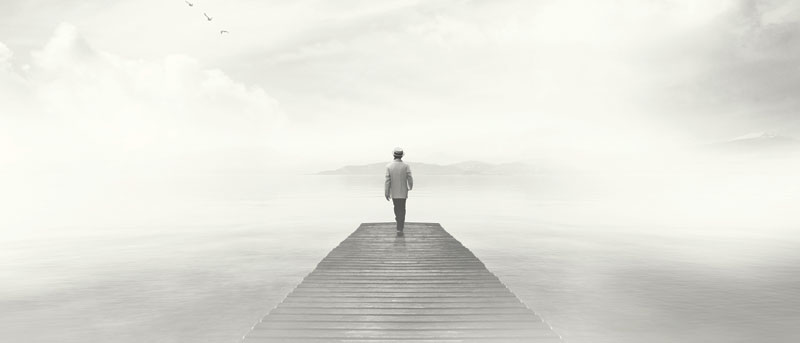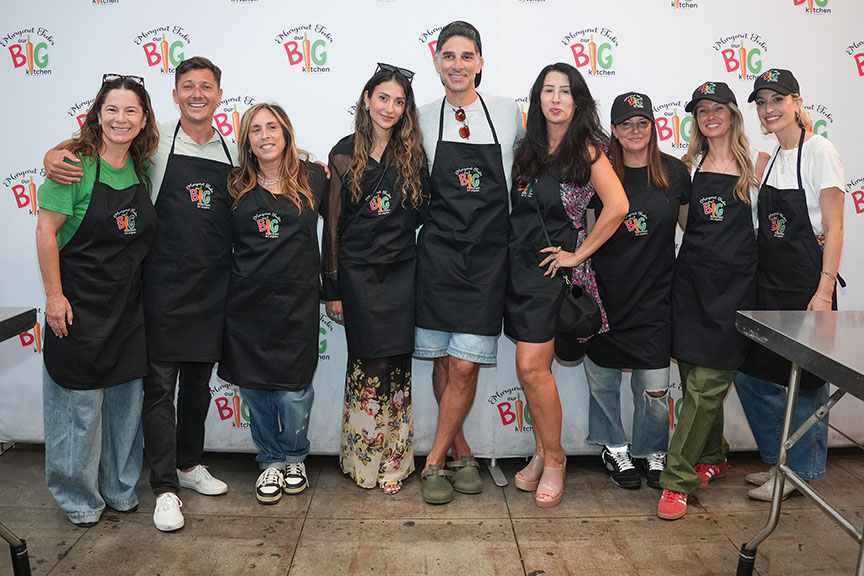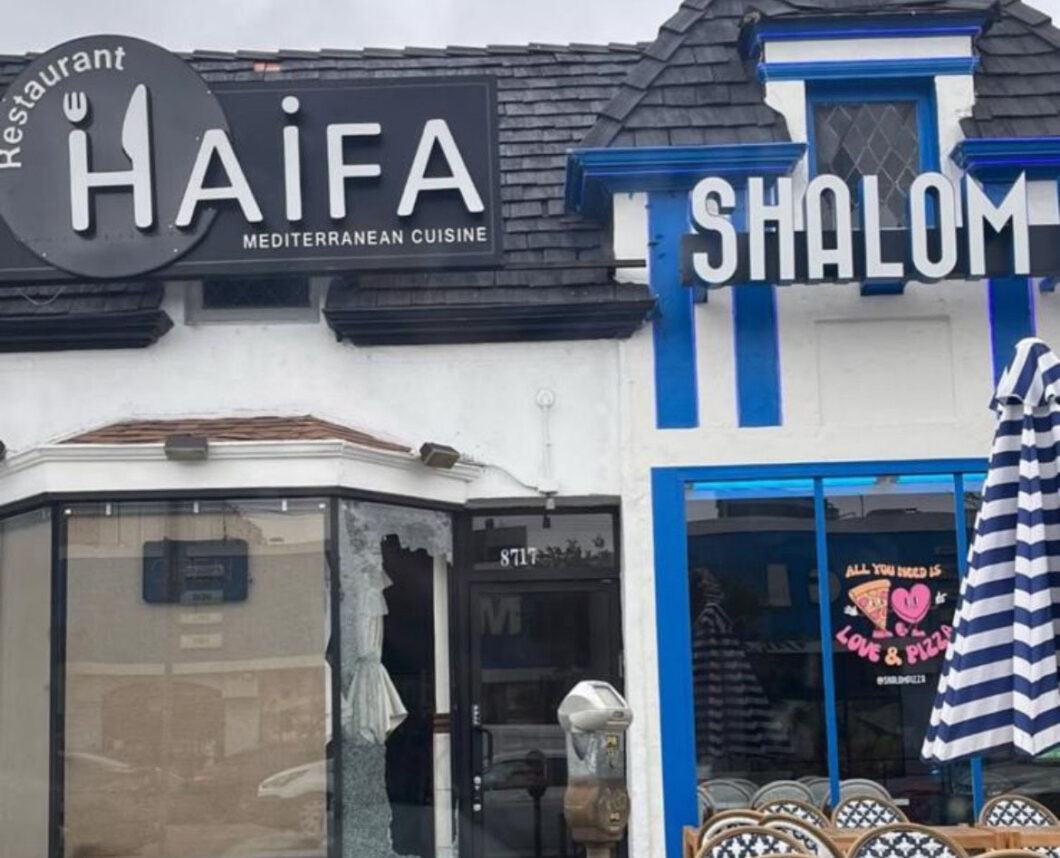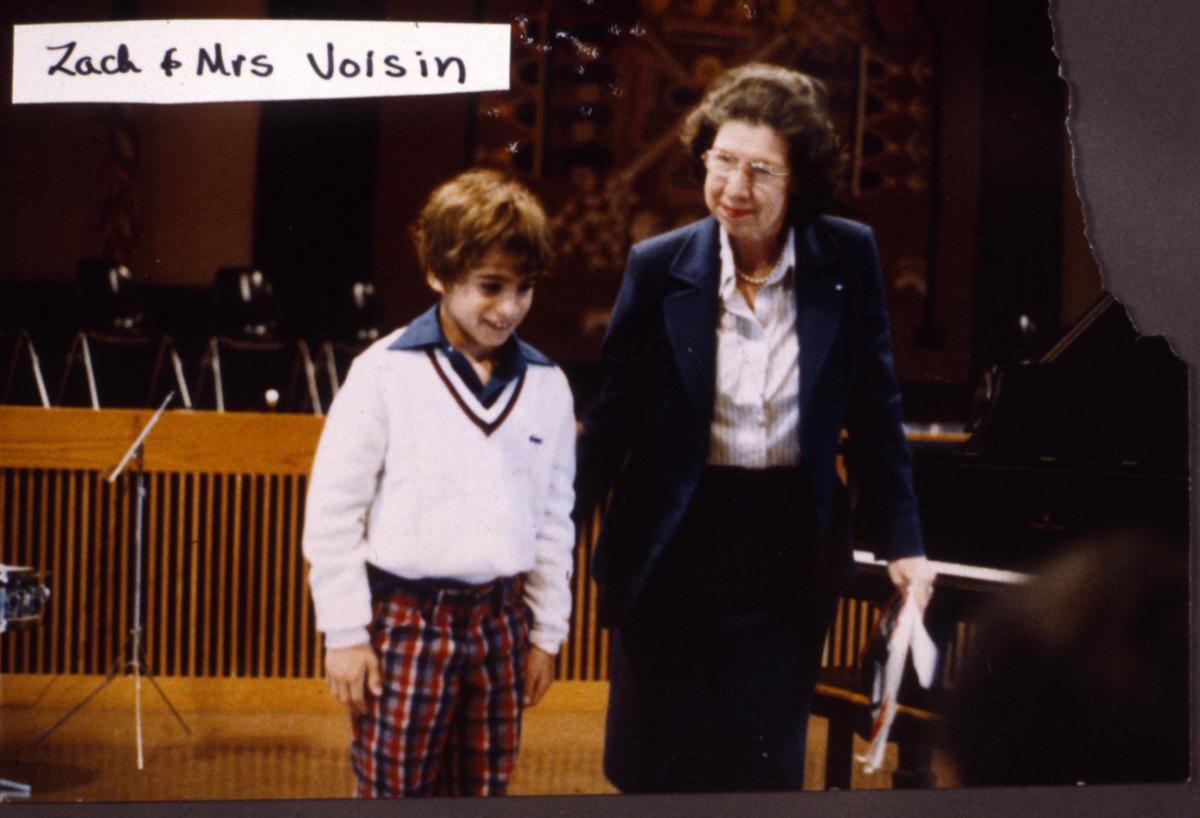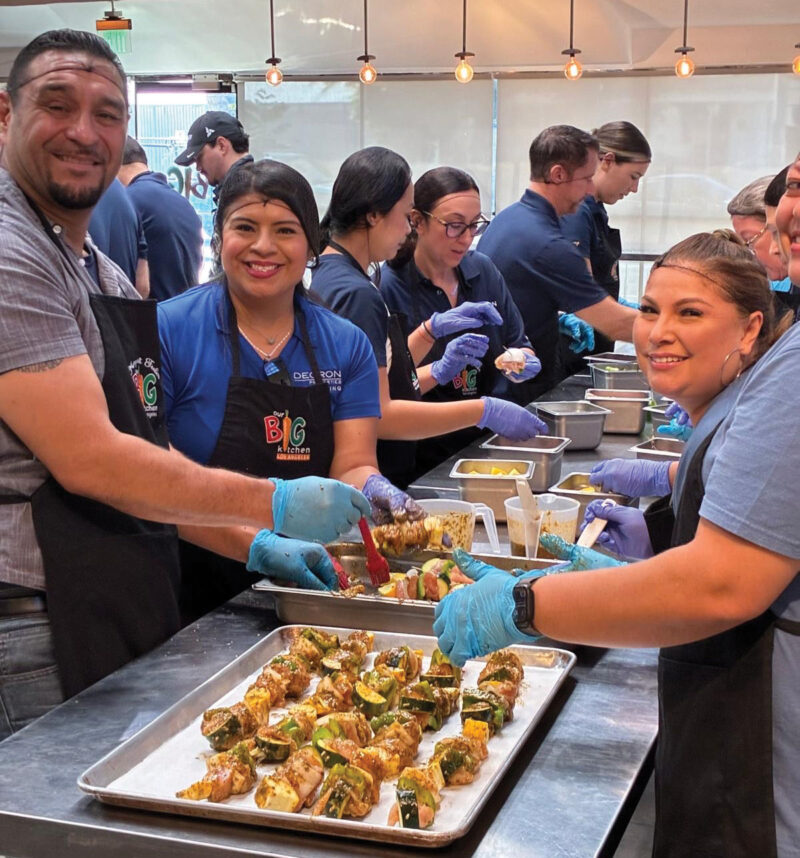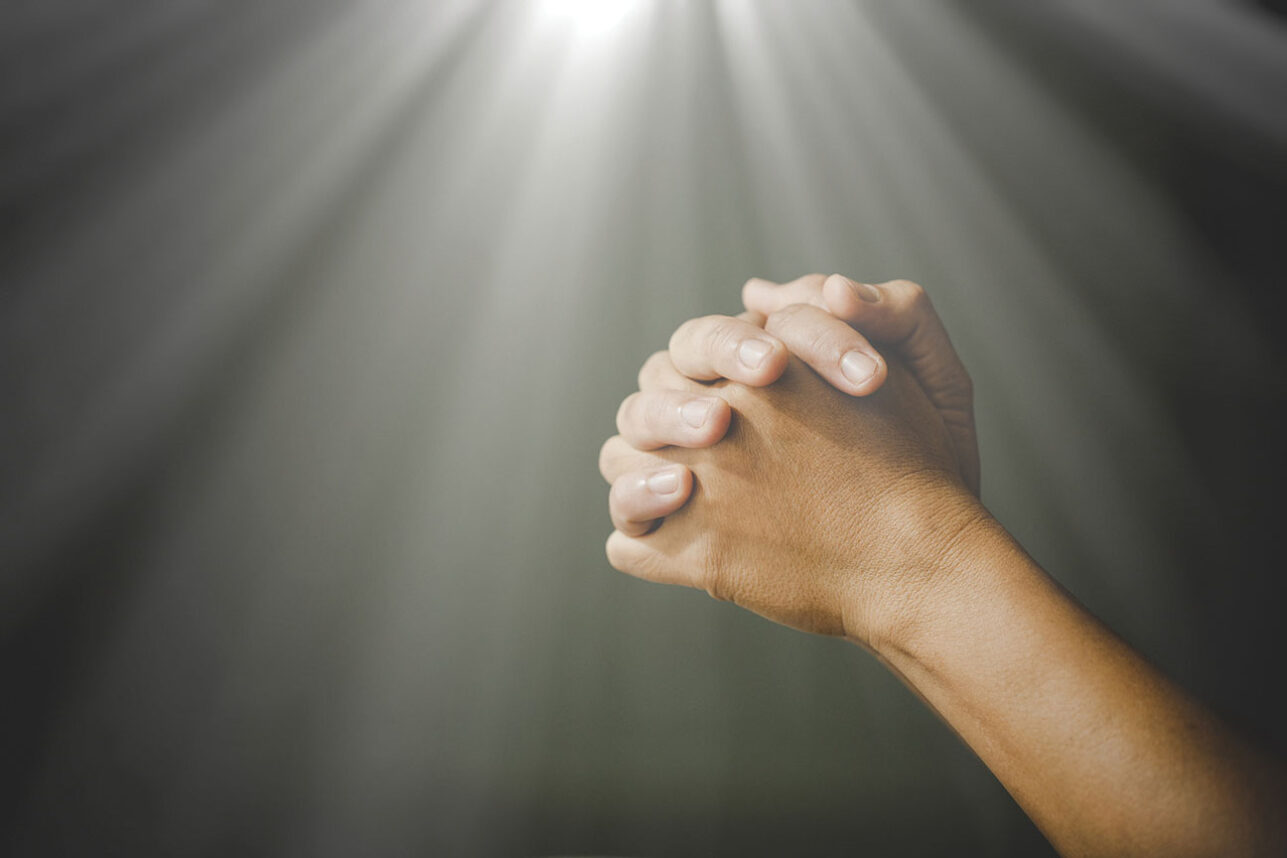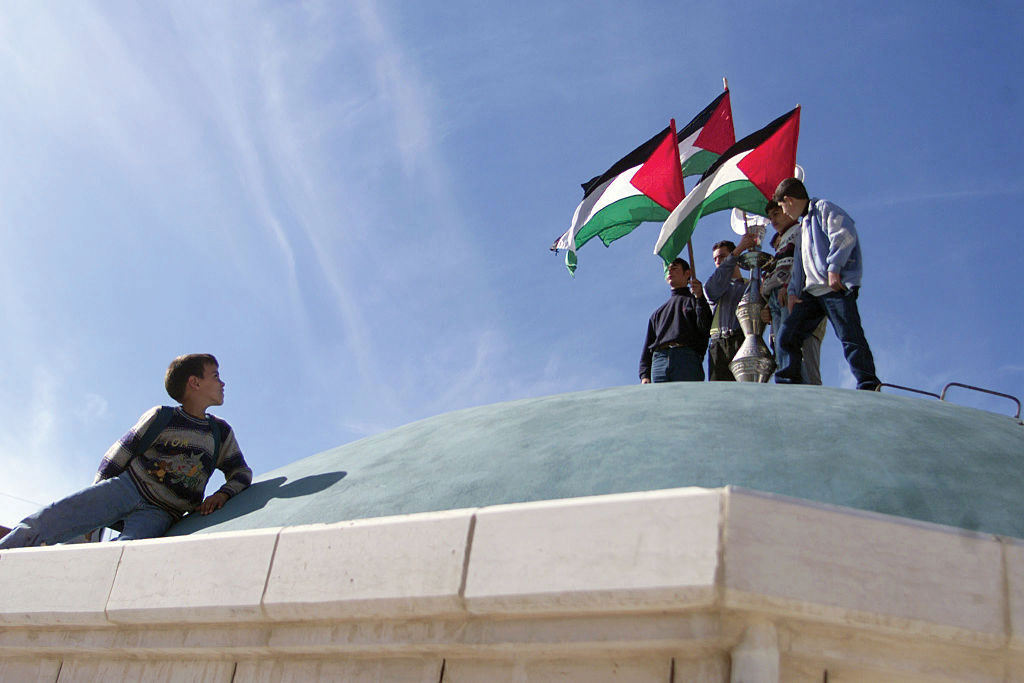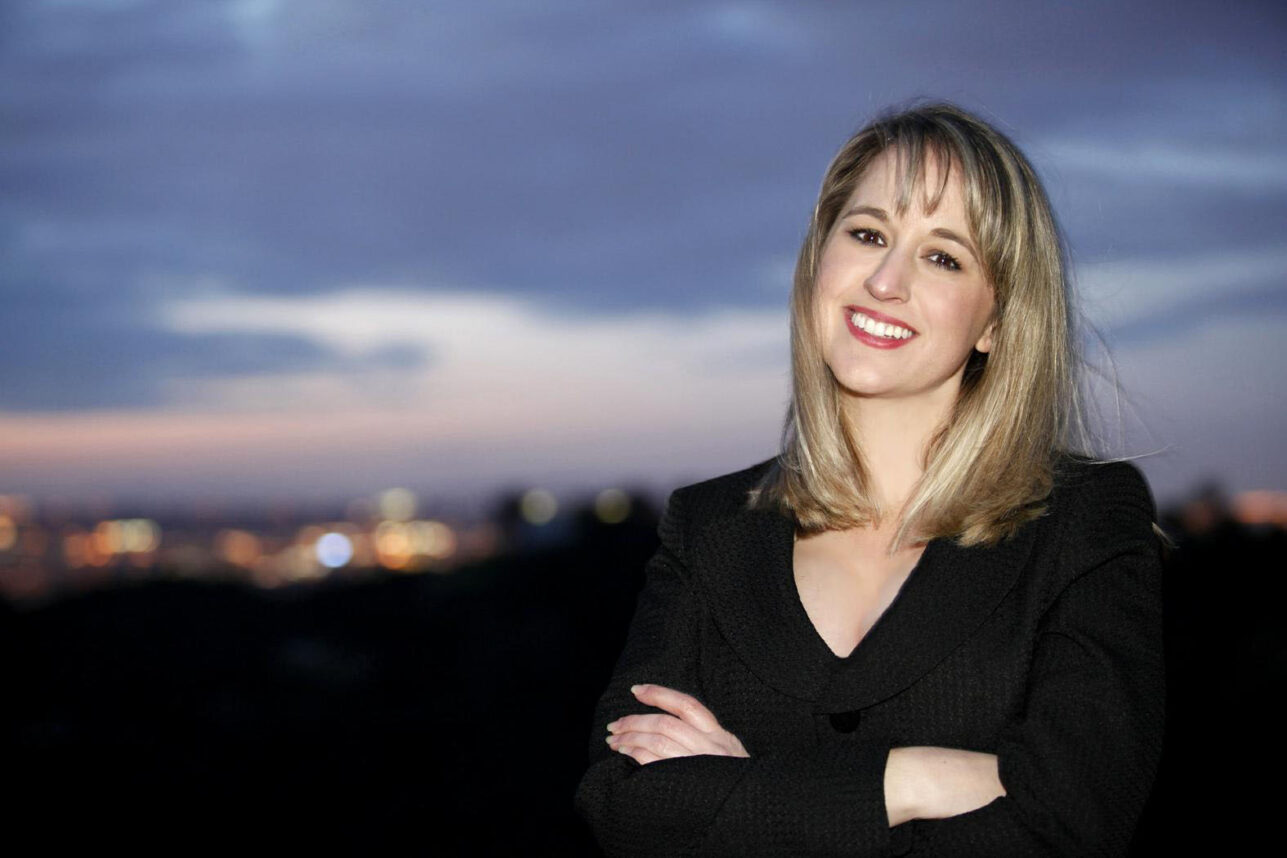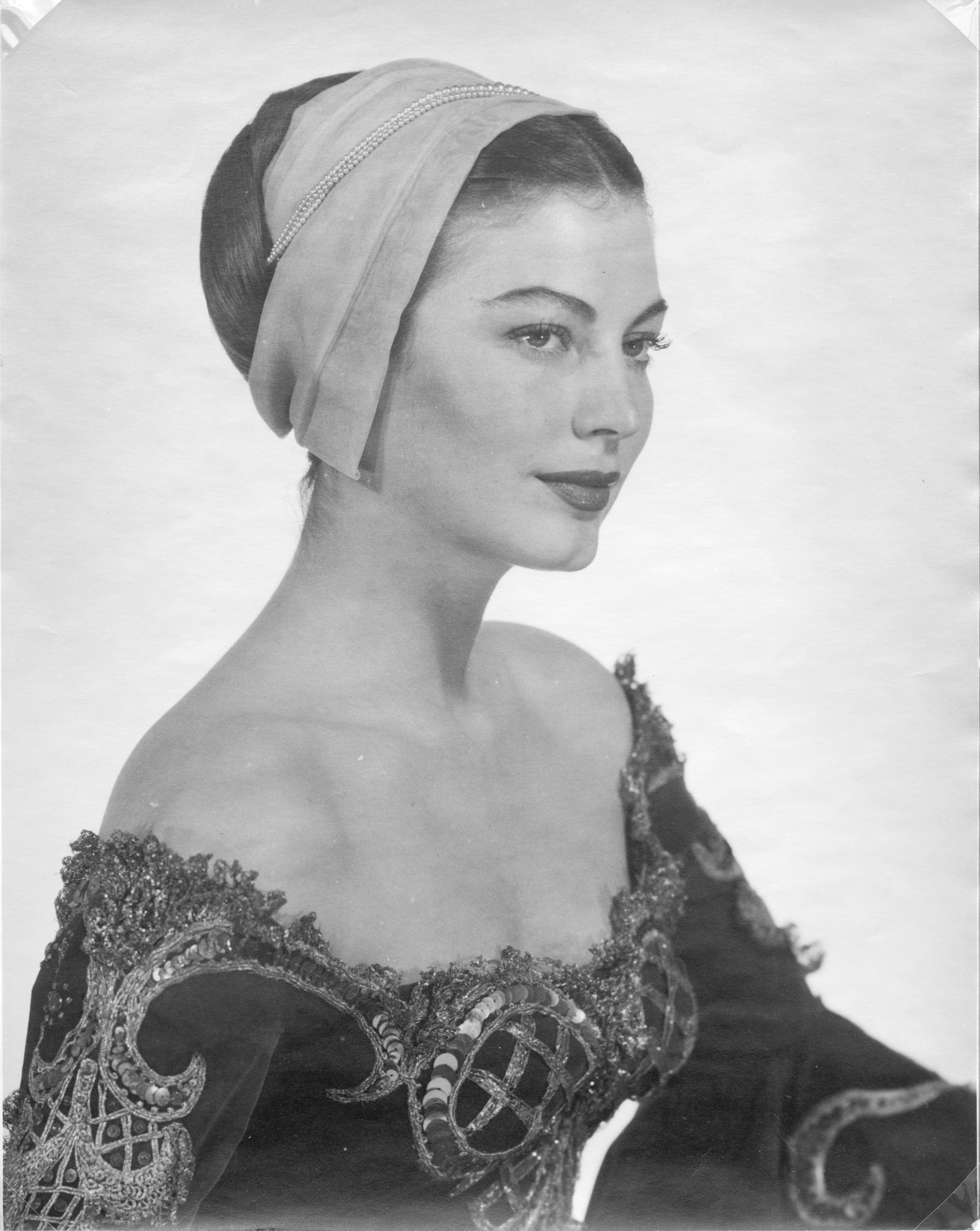
The artist Man Ray led a productive and celebrated life in Paris, where he was a leading figure in the Dadaist and Surrealist movements of the early 20th century. But that life was interrupted by World War II, forcing the American-born artist to flee war-torn Europe in 1940 and move to Los Angeles, where he lived until 1951, rubbing shoulders with glamorous actors, artists and intellectuals. You can see images from that period at Gagosian in Beverly Hills, where about two dozen of his Hollywood portraits are on view through Feb. 17.
Man Ray’s best-known avant-garde images from the 1920s and ’30s became iconic: a reclining woman reaching her arm toward a giant pair of lips floating in the sky; a woman’s bare back with a violin’s F-shaped holes painted on it; a closeup shot of upturned eyes with glass bead tears; and a woman’s head turned sideways, with her hand holding a carved black mask. He always made a living in Paris shooting for fashion magazines and fashion houses, but upon his return to the United States, he renounced commercial photography in order to dedicate himself to painting.
“He didn’t want to stay in New York because he didn’t want to go back into that middle-class, struggling-artist lifestyle that he remembered from his earlier years. And so he took the risk to go out to L.A. and paved his own way,” said Max Teicher, the exhibition’s curator.
But he couldn’t leave portrait photography behind for long once he entered the world of glamour and wealth of 1940s Los Angeles.
In his 1963 memoir, “Self-Portrait,” Man Ray observed that L.A. “was like some place in the South of France with its palm-bordered streets and low stucco dwellings. Somewhat more prim, less rambling, but the same radiant sunshine.”
“Man Ray really brought art into photographs, portraits specifically, in a way that was unique for the time.” — Max Teicher
Emmanuel Radnitzky was born in Philadelphia in 1890, the oldest child of Russian-Jewish immigrants. In 1912, the Radnitzky family changed its last name to Ray in reaction to ethnic discrimination and anti-Semitism. Emmanuel, nicknamed “Manny,” changed his first name to Man and eventually began to use the full name Man Ray. A true Renaissance man, he explored painting, photography, sculpture, printmaking, film, poetry and prose.
In Los Angeles, he met a dancer and artists’ model, Juliet Browner, whom he married. He had moderate success as a painter, with a series of solo shows, including a highly regarded 1948 show at the Copley Galleries in Beverly Hills. His images of Hollywood stars helped keep him afloat financially.
Man Ray was introduced to the Hollywood elite through patrons such as Walter and Louise Arensberg, and through two of his friends, the directors Jean Renoir and Albert Lewin. That connection allowed him to shoot Ava Gardner in costume for “Pandora and the Flying Dutchman,” a 1951 film that Lewin directed (and Man Ray did some set design for). In his photo, Gardner is bare-shouldered in an elegant sequined dress, looking off to the side, with a playful smile on her lips. A color version of the photo is displayed in the film on her character’s bedside table.
His portrait of Jennifer Jones was taken in 1944, the same year she won the Academy Award for best actress for her starring role in “The Song of Bernadette.” She is wearing a plaid dress, reclining in a chair next to a chandelier and holding what looks like a cross-stitch in progress. That photo, and one of actress and dancer Tilly Losch, were published in Harper’s Bazaar. Other subjects include actresses Ruth Ford, Leslie Caron and Paulette Goddard, and composer Igor Stravinsky.
“They’re very stylized,” Teicher said. “Now we’re used to seeing images like this. You think of [Richard] Avedon. You think of some of the great photographers of the second half of the 20th century. That’s what they’re known for. But earlier, that wasn’t necessarily the case. And so Man Ray really brought art into photographs, portraits specifically, in a way that was unique for the time. And I think he brought that talent to L.A. during these important years.”
Man Ray’s deadpan humor comes through in his self-portraits. “Self-Portrait With Half Beard” shows the artist looking seriously at the camera, the left side of his face shaved and the right side with a scruffy beard. In another, he is sitting and chatting on a street curb on a Hollywood set of Paris with his close friend, the conceptual artist Marcel Duchamp, with a street sign in French behind them.
Only one of the photographs makes a direct reference to the war. In 1945, Man Ray photographed James Roosevelt, the oldest son of President Franklin D. Roosevelt and Eleanor Roosevelt. After working in Hollywood for a few years as an assistant to motion picture producer Samuel Goldwyn, Roosevelt served as a Marine Corps officer during World War II and received the Navy Cross for extraordinary heroism. He is photographed in his uniform with military awards pinned to his chest.
Another striking photo is of Isamu Noguchi, a Japanese-American artist and landscape architect who was known for his sculpture and public works, his furniture designs and for designing stage sets for Martha Graham dance productions. Noguchi is shown in profile, his eyes cast downward and to the side in a contemplative pose.
Man Ray, who returned to Paris in 1951 and died there in 1976, did dabble in Hollywood moviemaking, writing for fellow surrealist Hans Richter’s 1947 experimental film, “Dreams That Money Can Buy.” But he mostly eschewed a Hollywood career.
“He was photographing everybody. He was friends with the most celebrated actors and actresses,” Teicher said. “But deep down he was an artist, and he was an outsider.”
“Man Ray’s LA” is on view through Feb. 17 at Gagosian in Beverly Hills.








